ASSA ABLOY
UX Researcher & Designer | B2B Physical | 2018-2020
Overview
After completing my master thesis, ASSA ABLOY Entrance Systems brought me on board as a project employee for UX research and energy calculations on different door types, including revolving, sliding, and vestibule systems. Each project typically took around 3 months. Below is an example of the 'Revolving Door Project.'
Role
I led the UX project, conducting independent research to to observe and analyse pedestrian behaviour at doorways, identify pain points, and suggest solutions. I also quantified air infiltration and energy consumption using CFD calculations. I also helped create training materials for employees and marketing content.
Additionally, I contributed to two inventions on the intelligent door system design.
Work at a Glance


UX RESEARCH
ENERGY
The UX work involved field observations, video recordings of traffic situations, identifying pain points and opportunities, and developing solutions and concept designs.
The energy work involved creating CFD video animations and performing energy calculations to assess air infiltration and energy loss through the door.
The results have been utilized for both product development and marketing training.
UX Research
Field studies were the primary UX tool for this project. I conducted extensive observations of revolving doors across various segments, recording pedestrian behavior, walking flow, and speed, and identifying pain points and opportunities for improvement.

Pause several times

Rotate constantly
Travel Efficiency_ 01. Waiting Time
What affects how long pedestrians wait before using a revolving door? For instance, a 2-wing revolving door usually has a maximum wait time of 5 to 6.5 seconds, but this can increase during heavy or cross traffic.
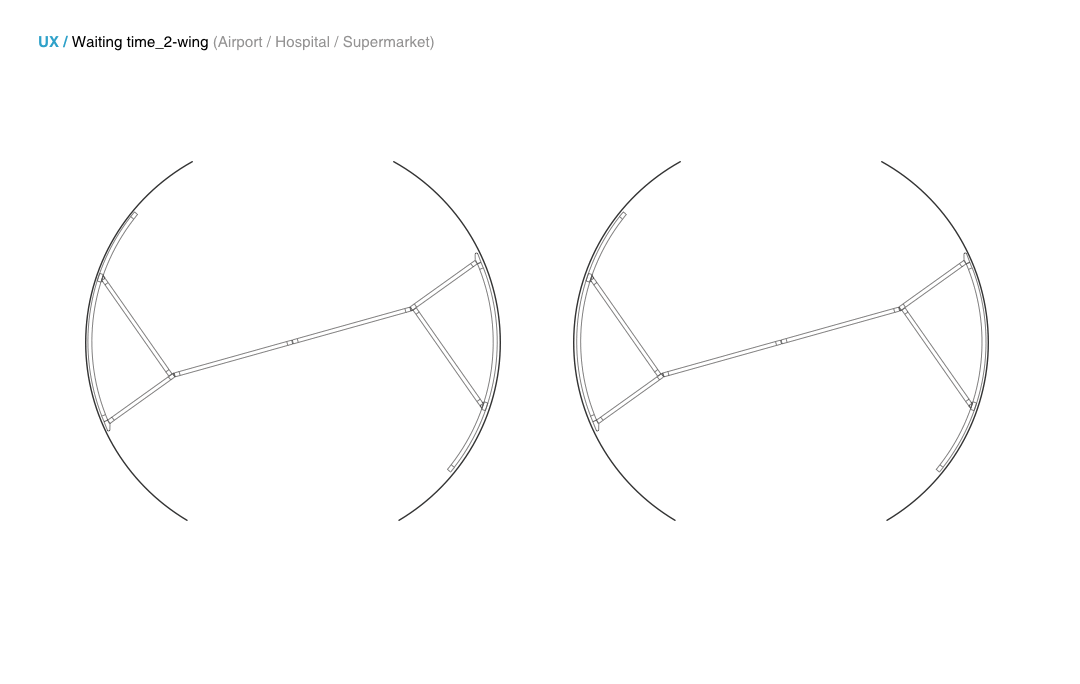
The waiting time can be even longer under heavy traffic or safety sensor activation.
Heavy traffic

Safety sensor activated

Travel Efficiency_ 02. Walking Pattern
Pedestrian walking patterns include speed and route. For instance, how does walking speed change with a 3-wing revolving door? After comparing different door types, pedestrians generally find the route smoother on a 2-wing door compared to
3-wing or 4-wing doors.




Travel Efficiency_ 03. Safety Sensor Activation
There are two types of safety sensors: sidewall and door-wing sensors.
For a 3-wing revolving door, I want to determine:
-
When do these safety sensors get triggered?
-
How do they affect pedestrian travel efficiency?

Three types of sidewall safety features


Concept Design
Based on the field study, safety sensors are triggered unnecessarily under 90% of the time. We need more intelligent sensors that can accurately recognize different situations.
To address this, I developed both short-term and long-term concepts.

90%
Short-term Concept
Detect pedestrians' waiting time at the door opening area

Long-term Concept
How can we ensure a seamless experience for all pedestrians without causing interruptions?
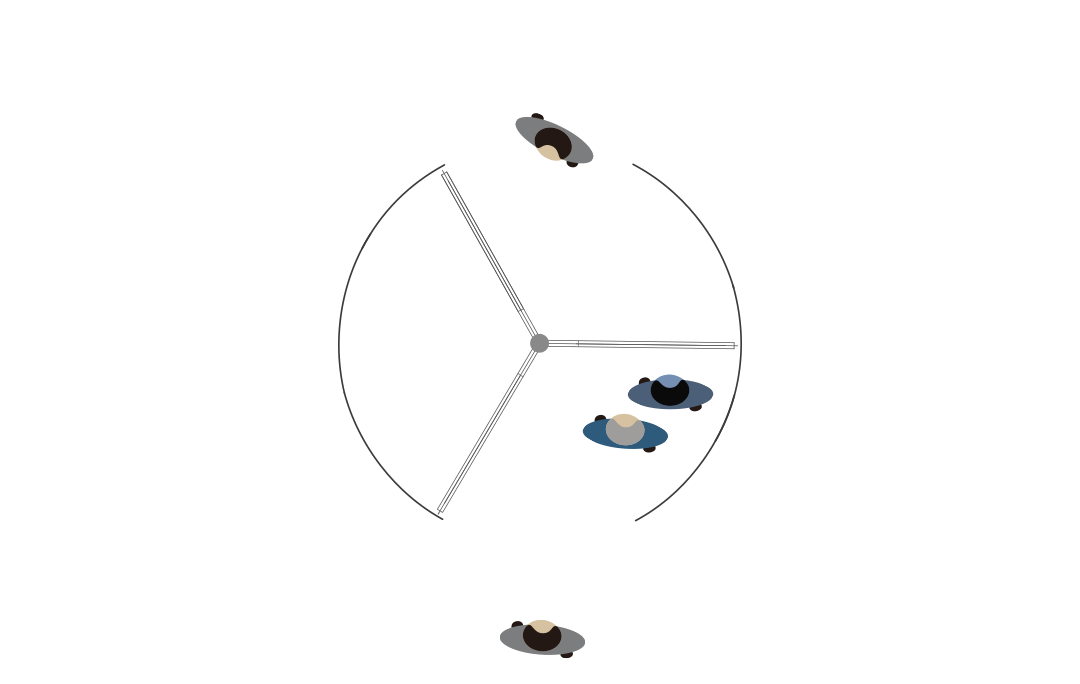
BEFORE

AFTER


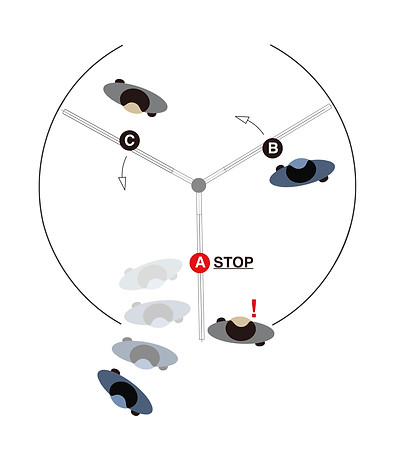
Door wing safety
How can we ensure a seamless experience for all pedestrians without causing interruptions?

Pain Points:
-
Pedestrians get stuck, bump into doors/people.
-
Pedestrians get confused.
-
Increase pedestrians’ passing and waiting time.

Solutions:
-
Installing caution lights to warn pedestrians.
-
Using an intelligent sensor to distinguish between luggage and pedestrian.
Energy Saving
Based on my observations, I found that revolving doors are often activated by cross-traffic due to improper installation or incorrect detection settings. This leads to unnecessary rotations, resulting in wasted energy as indoor air escapes during winter time. When activated by pedestrians, the door completes at least one full revolution, even though it could stop sooner once the pedestrian has exited.
To test this assumption, I utilized CFD (Computational Fluid Dynamics) calculations in my project, which proved to be extremely valuable for ASSA ABLOY by quantifying air infiltration and energy consumption.
Actived by cross-traffic
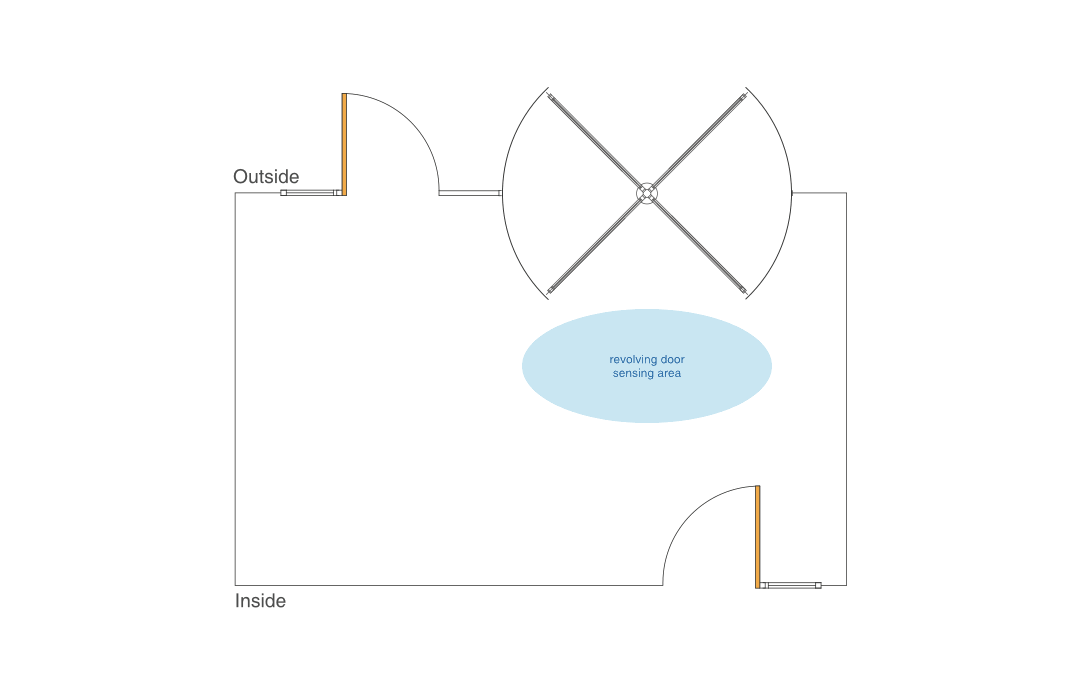
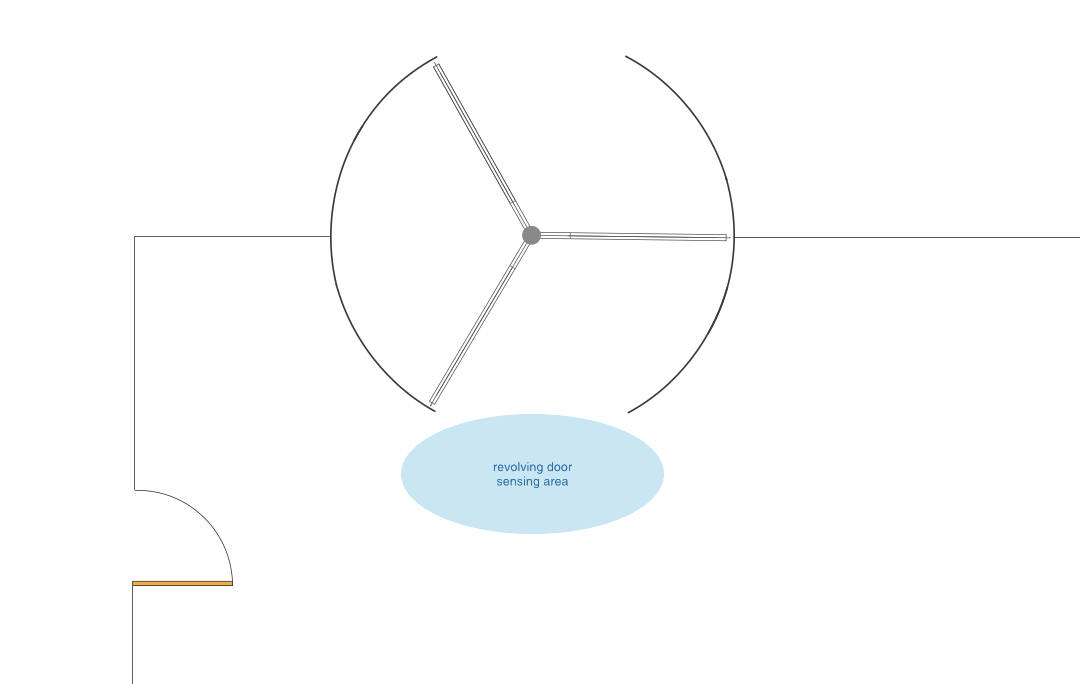
Unnecessary Rotations

CFD Energy Calculation


Energy calculating formulation
According to the confidentiality agreement, the results and video animations of CFD calculations can NOT be published. Thank you for your time so far.